#Broccoli Nation Rise
Explore tagged Tumblr posts
Text
Bad news everyone.
It’s the last Broccoli Day!!!!! 🥦🥦🥦
But I will revel in the love between Win and Team because knowing they have a happy ending on the way is practically what’s kept me going this week!
How it started:

How it’s going:

#Between Us#Between Us the series#Between Us🥦#WinTeam#DeanPharm#PrukManow#WaanTul#BeePrince#so many ships#all of them beautiful!#Broccoli Nation Rise#Broccoli Nation#the only broccoli I care about is Nong Broc#Nong Broc#Until We Meet Again#UWMA#Between Us ep 12
54 notes
·
View notes
Text
Happy holidays BLabies!
This is your seasonal reminder that this is what mistletoe looks like:

(a bright green small-leaved parasitic plant)
and this is what Thai BL *thinks* mistletoe looks like:

(tiny-tree unpleasantly farty-tasting Brassica florets)

So don't forget to hang your broccoli for young queers to kiss under.
#rise up broccoli nation#winteam#uwma#thai bl#until we meet again#broccoli = mistletoe#it's a BL world we just live in it
310 notes
·
View notes
Text
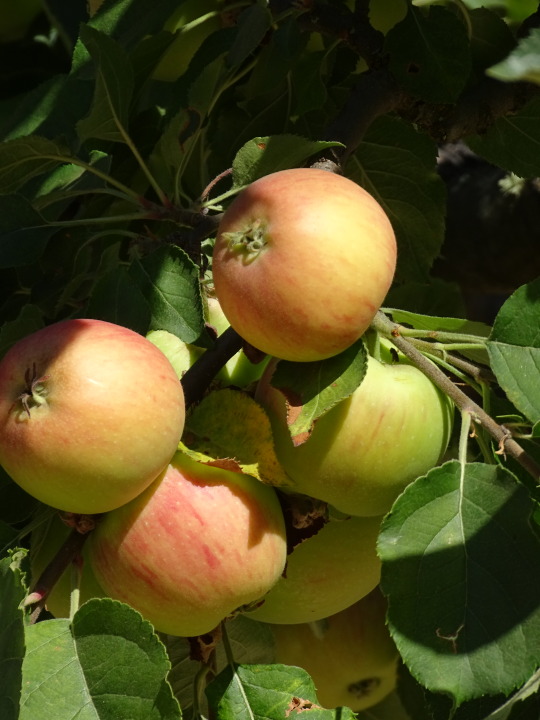
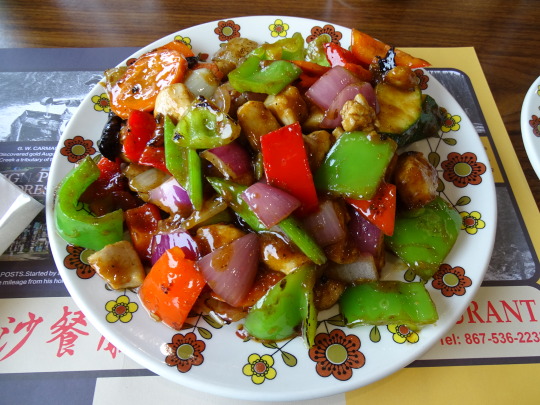
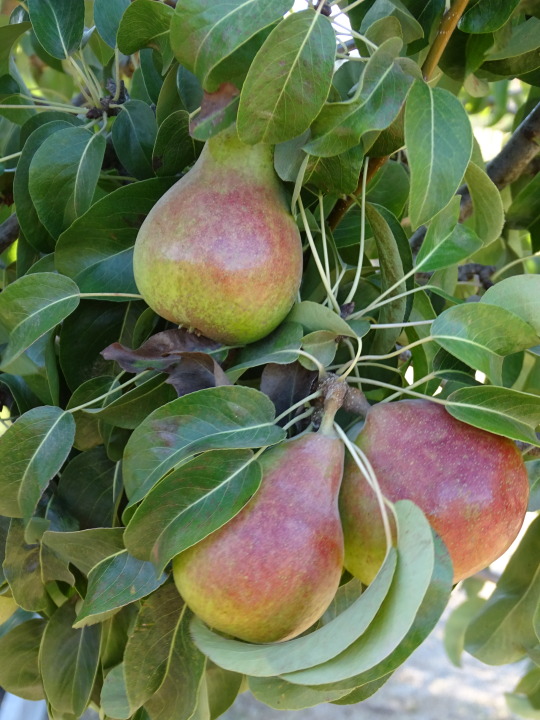
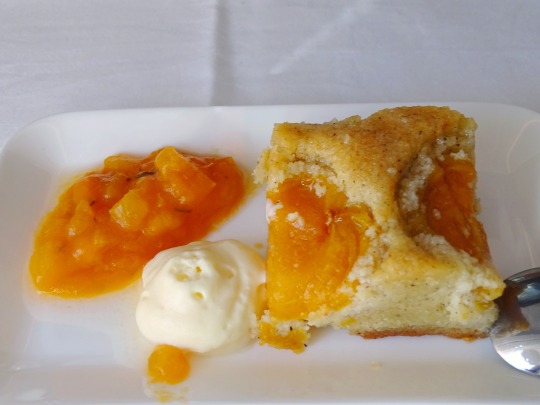
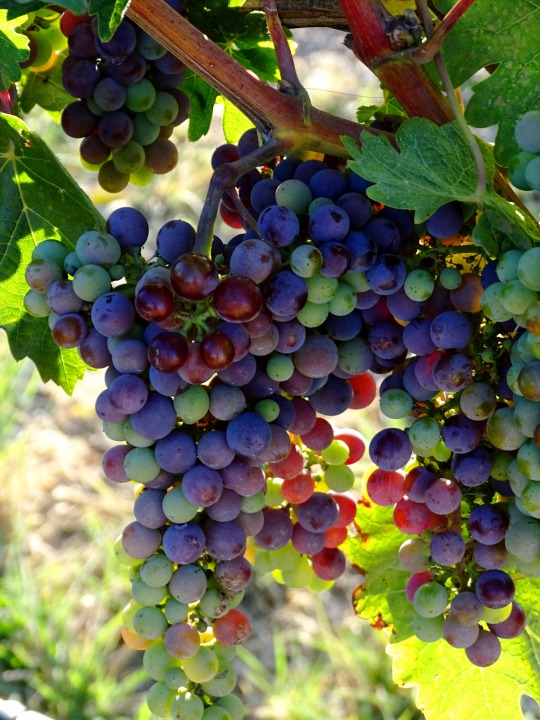
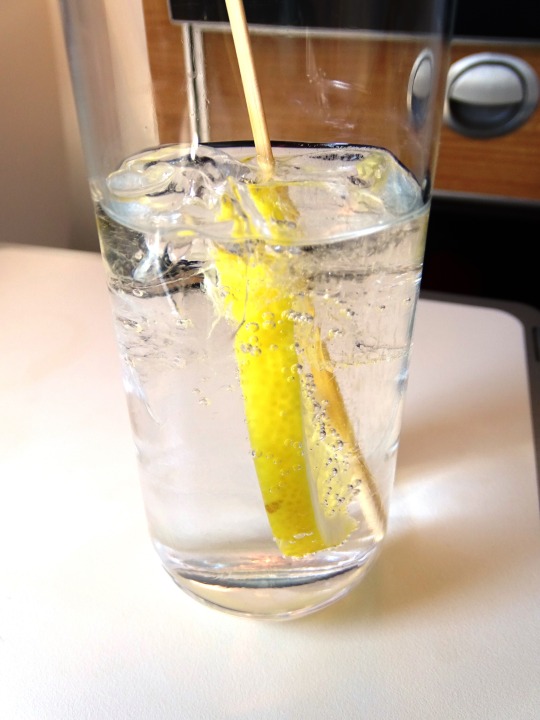
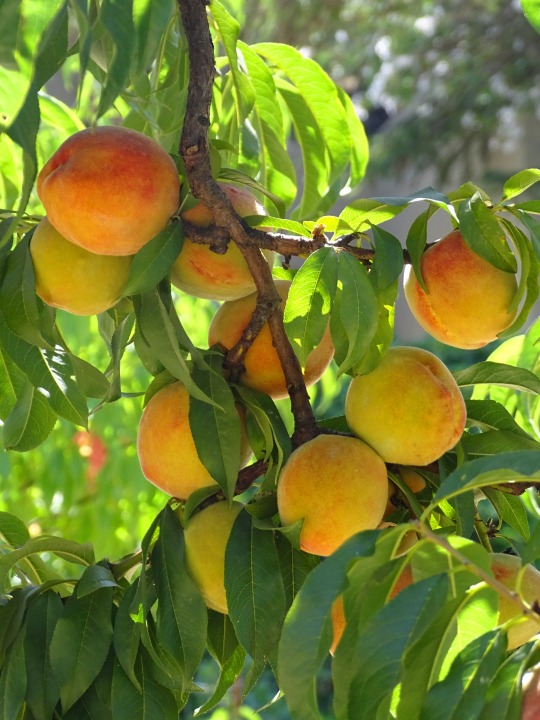



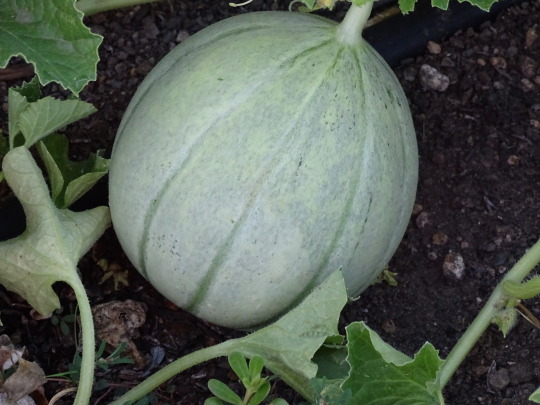
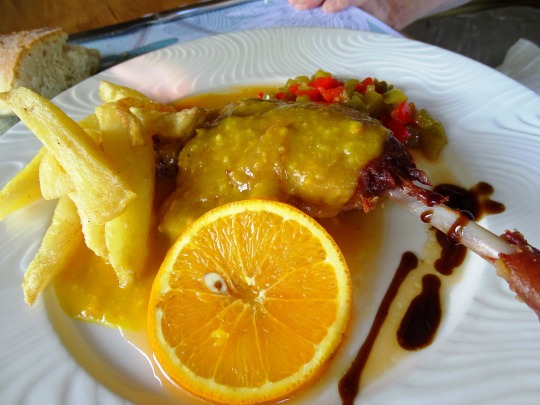
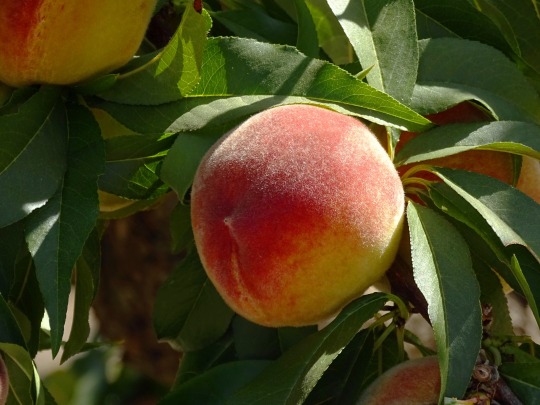


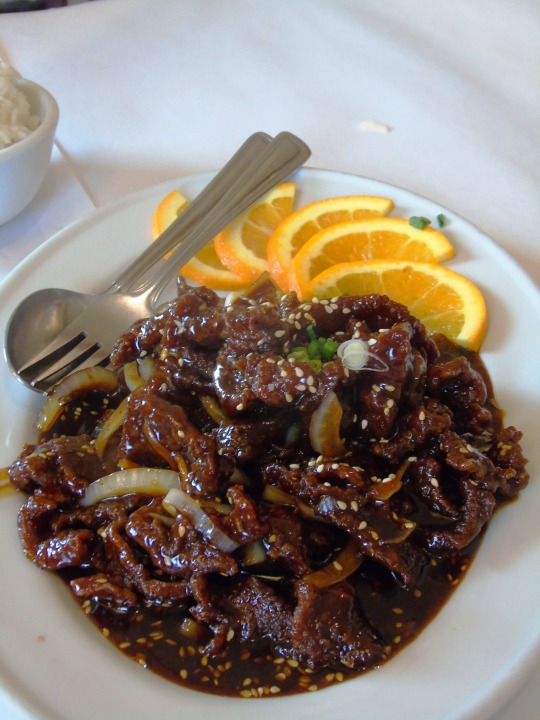
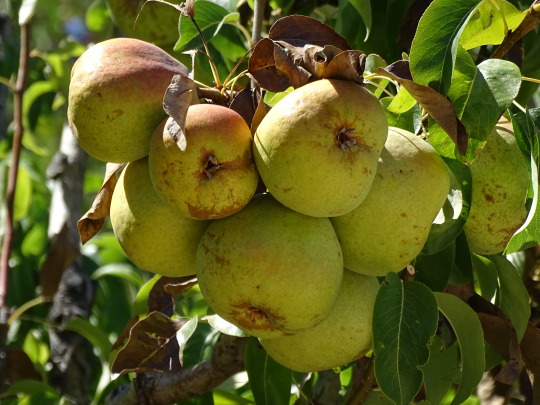
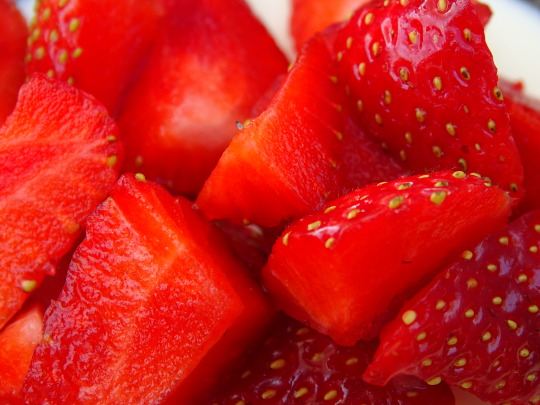
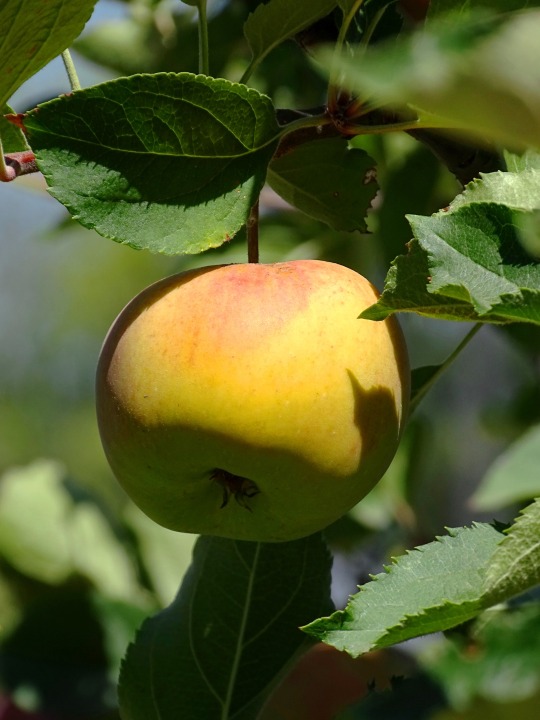


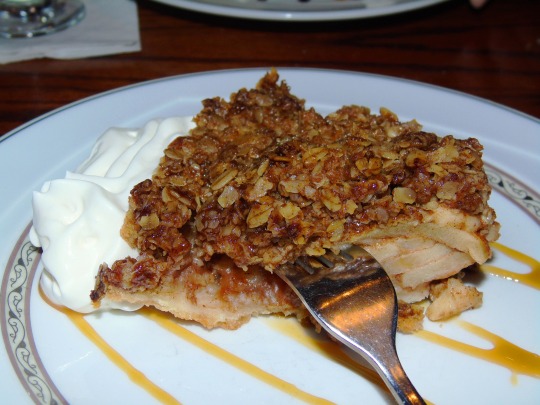
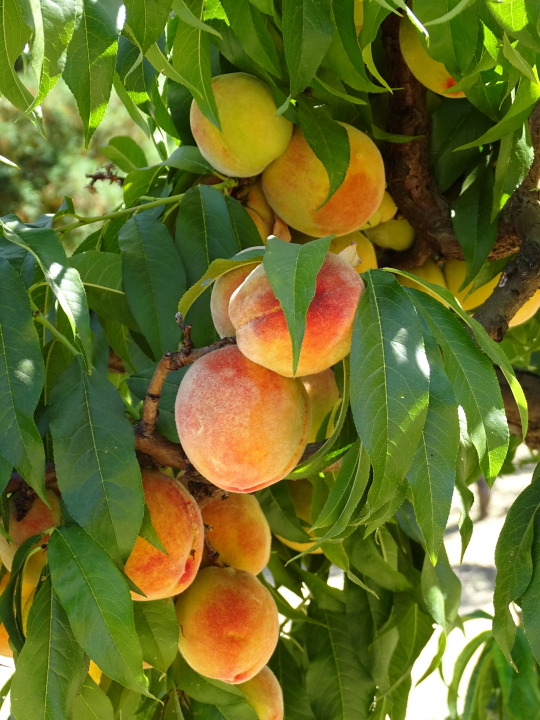

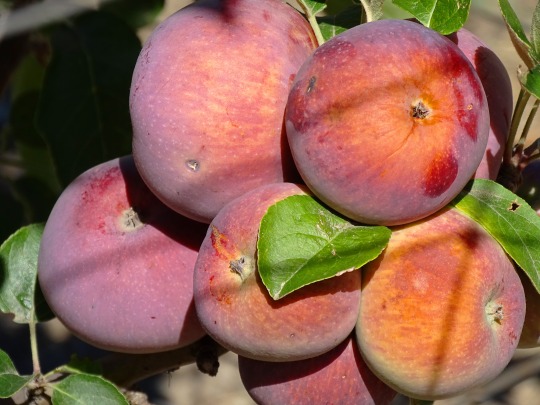
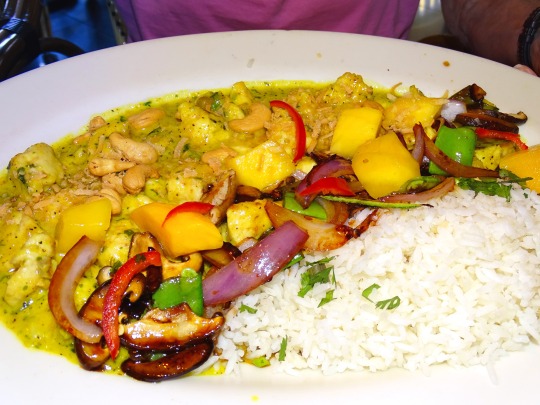
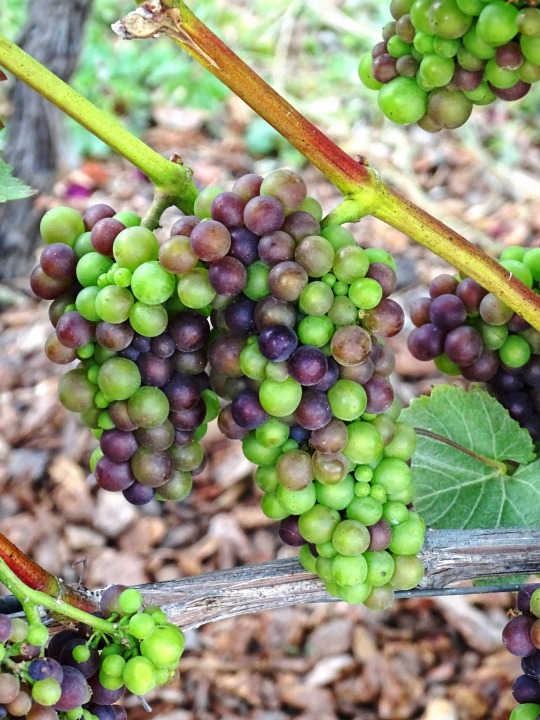
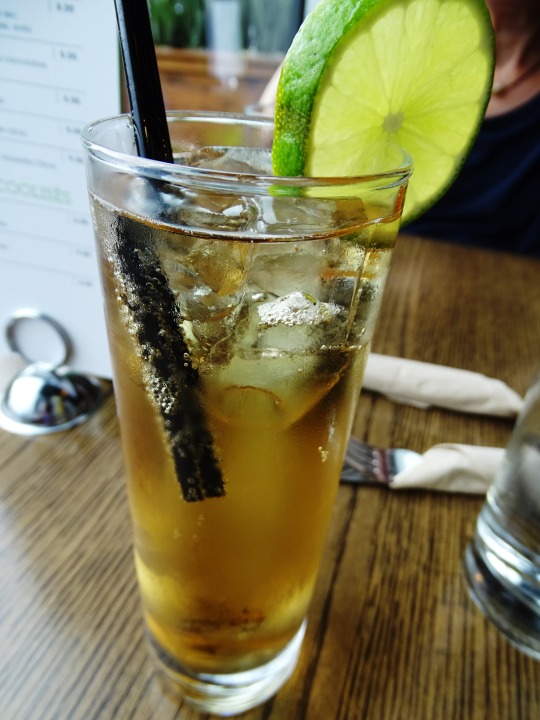
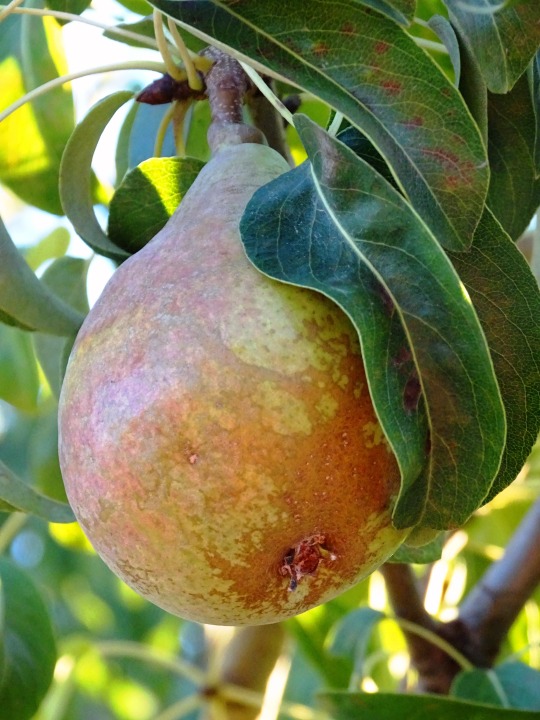
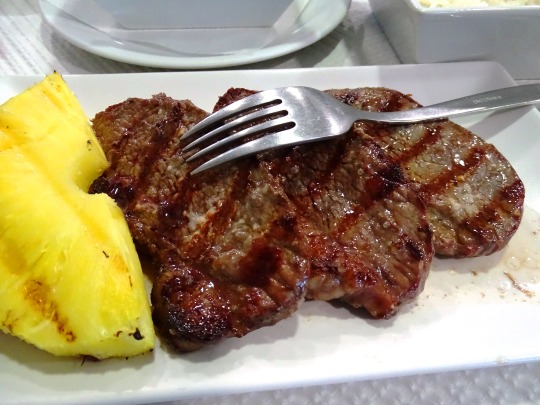
National Vitamin C Day
It’s good for your immune system, it’s good for your mental health, it’s even good for your skin. Don’t neglect this crucial vitamin on Vitamin C Day.
Vitamin C. We all hear about it, how good it is for us, how it will help us fight off that cold. But how much do we really know about this mystery substance, and just how much can it do to help our bodies? Take advantage of Vitamin C day to learn something new and boost your health, to boot!
Learn about National Vitamin C Day
National Vitamin C Day has been created so that we can appreciate and learn all about the different ways that vitamin C can benefit our health. Vitamin C is also referred to as ascorbate and ascorbic acid. It is found in a number of different foods, as well as being sold as a dietary supplement. It is an essential nutrient in terms of producing a number of neurotransmitters and repairing tissues. It was discovered back in 1912. Sixteen years later, it was isolated. Then, in 1933, it became the first vitamin to be produced chemically.
Vitamin C is widely recognized for helping to keep colds at bay. However, there are plenty of other benefits that are associated with this powerful vitamin! You could reduce your blood pressure by upping your vitamin C uptake, for example. Vitamin C is also beneficial in terms of helping to keep your skin healthy. This is because it protects it from the oxidative damage that is caused as a result of exposure on a daily basis to pollution, heat, and light. This has seen the population of vitamin C products increase considerably.
There are plenty of natural ways to add some more vitamin C to your diet. You don’t need to opt for vitamin C supplements, although many people do. Some of the fruits that have the highest sources of vitamin C include cantaloupe melon, citrus juices and fruits, kiwi fruit, pineapple, papaya, mango, and the various berries, such as cranberries, blueberries, raspberries, and strawberries. There are a number of vegetables that are rich in vitamin C as well, including cauliflower and broccoli.
The History of National Vitamin C Day
As a substance occurring naturally in countless different fruits and vegetables, vitamin C has likely been around as long as the earth itself. Peoples from all over the world have long been aware of the extensive health benefits of consuming foods high in vitamin C as well as the risks associated with not consuming enough of it, one of which is scurvy. It was not until the late 19th century that scurvy was described in detail by British physician Sir Thomas Barlow, that people began to understand just how much this substance can do for our health.
However, scurvy was known for thousands of years prior, with even the great Hippocrates himself writing about it. In the 18th century, it is assumed that the disease killed more British sailors than any enemies they had and was one of the greatest factors limiting maritime travel over the ages. Today, very few people suffer from scurvy and Vitamin C is considered on of the most important nutrients food can and should provide.
How to celebrate National Vitamin C Day
The best way to celebrate National Vitamin C Day is to stay healthy, and this very vitamin can help you with that! Vitamin C is necessary for good health and general well-being, but the unfortunate truth is that not everyone has the time to pay close attention to what they eat and just how many grams or milligrams of a certain substance they consume daily.
The drastic rise in popularity of microwavable dishes has caused people’s diets to become much less healthy over the recent years, as has the fact that many people are working longer hours than ever and don’t have the time or the energy to cook themselves and their families a well-balanced meal every day.
Luckily, there are a few ways to make sure you’re getting enough Vitamin C, no matter your lifestyle. One is to simply squeeze lemon juice into the water you drink. Half a lemon contains almost 100% of your daily vitamin C requirement, so just a squeeze here and there will be more than enough!
The same goes for—alcoholic drinks. If you’re going to have a few Mojitos this Friday anyway, why not use fresh lime juice? And have we mentioned Vitamin C helps prevent hangovers as well?
But it doesn’t stop there—as it tuns out, you can put lemon juice into pretty much everything for your daily dose of Vitamin C as well as a deliciously tangy zing. As opposed to some other “healthy” foods which, let’s face it, can be downright nasty (looking at you, kale!), lemon juice makes almost everything you put it on and in taste better.
Salad dressings. Grilled meats. The list goes on. And if for whatever reason you’re not a fan of lemons, don’t worry! Many fruits and vegetables contain enough Vitamin C to keep you healthy, including tomatoes, strawberries, spinach, peppers, and many more. Take advantage of National Vitamin C Day to do your body a favor!
Vitamin C cannot only be consumed, but it can be applied to your skin as well. As mentioned earlier, Vitamin C is great for skin health. Why not make your own Vitamin C serum? It is not as difficult as you may think! All you need is some aloe vera gel, filtered water, and vitamin C powder. You may decide to add some other vitamins as well, such as vitamin E oil. There are some variations of how to make vitamin C serums and facemasks online, but the ingredient list is a simple one, yet the benefits are vast!
Of course, you can also buy some vitamin C skin products, rather than making your own. If you are going to use a vitamin C serum, whether homemade or not, we recommend washing your face first and using a toner. You can then apply a small amount of the serum. The serum is probably going to be quite thick. Do this before you go to bed, and add another layer of moisturizer. In the morning, you should wash your face thoroughly before any makeup is applied. Because of sun exposure, vitamin C serum is not designed to be used on a daily basis.
Make sure you spread the word about National Vitamin C Day and the benefits associated with this nutrient so that you can help others experience the benefits of it!
Source
#seaberry and hazelnut mousse#lime tree#grape#National Vitamin C Day#VitaminCDay#4 April#flora#nature#original photography#strawberry#Beringer Vineyards#peach#USA#Spain#Sweden#food#Lemon Semifreddo#fruit#lemon#orange#apple#pear#travel#vacation#tourist attraction#landmark#cityscape#Brix Restaurant and Gardens#apricot tarte#peach cobbler
10 notes
·
View notes
Text
French Politics & Bond Moves: The Hidden Forex Signals French Politics, OATs & Bunds: Hidden Forces Driving the Forex Market Ever wonder why your trading performance feels a bit like trying to steer a rowboat through a storm while everyone else seems to be cruising on a yacht? It might be time to talk about OATs and Bunds—and no, I'm not talking about breakfast choices. French Politics: The Unexpected Market Driver Today’s OATs (French government bonds) are playing a familiar yet treacherous tune. They’ve risen but pulled back from the 127.04 session peak. Why the shift? It’s all about French politics. Prime Minister Barnier is outlining the social security budget today, a piece of legislation so controversial that it might just burst into flames before it even hits the National Assembly. The budget includes red lines that the far-right Rassemblement National (RN) party absolutely hates, meaning it's probably not going to pass. It’s kind of like trying to serve broccoli to a bunch of kids who only want dessert—it’s going nowhere. What’s the Impact on Forex Traders? As this political soap opera plays out, traders have responded with a collective shrug, keeping OAT-Bund 10-year yield spreads at 86 basis points, shy of last week’s 90 bps high. It’s like we’re all watching a thriller but can’t quite decide if it’s worth getting excited about just yet. For forex traders, the lesson here is simple: politics isn’t just for the dinner table debates. These events can tip the scales in markets you might not expect, leading to a ripple effect that ends up in currency pairs you trade. Bunds Riding the Wave of French Uncertainty Meanwhile, Bunds have had a little boost today, hitting session highs of 135.40, with investors seemingly anticipating fallout from France that could spill over into a broader Eurozone fiscal or economic mess. If you think politics in France stays in France, well, it doesn’t. The market’s worried it could become a Europe-wide concern, which makes Bunds (German bonds, if you’re new here) suddenly look like a much safer bet. Think of them as the kid on the playground who never gets into trouble—Bunds are the quiet achievers of the bond market right now. It’s Not Just About Politics: PMI Surprise (Or Lack Thereof) This morning’s PMI (Purchasing Managers' Index) readings were revised lower across the board, which is the economic equivalent of everyone realizing the cake they thought they were baking is actually kind of burnt. Except the pan-Eurozone figure—that one stayed flat, but frankly, it wasn't enough to really move the needle. The data didn't spark much action in forex markets, but it’s a good reminder that if you’re trading off economic indicators, revision day can still matter. ECB’s Kazaks Talks December Cut: Bunds Rise Again ECB Governing Council member Martins Kazaks hinted that a larger rate cut might be on the table in December, although he emphasized that uncertainty is sky-high. Cue the Bund rally. Investors like safety, and whenever central bank heads suggest a move towards easing (even if it’s in the future), you’ll see a flight to stability. Bunds benefited, adding a few more basis points, while forex traders should take note: lower rates can weaken the euro, and moves like these might be your early bird signal to start looking for opportunities. Gilts: Following the EGBs and a Morning Dip Jumping across the Channel to the UK, Gilts have had an interesting morning. They opened stronger, taking cues from the European Government Bonds (EGBs), but then lost momentum from the 96.25 high. You could say the Gilts lost their spark after their PMI got revised lower—kind of like realizing your coffee this morning is actually decaf. There’s no distinct catalyst for the fade, but the overarching narrative is all about Eurozone concerns and how British assets might respond. A Quick Look Ahead: U.S. Treasuries and Manufacturing PMI Across the Atlantic, we’ve got our eyes on U.S. Treasuries as we gear up for the ISM Manufacturing PMI. Everyone’s wondering if today’s numbers will set the tone for the big Non-Farm Payroll (NFP) report later in the week. Treasuries are currently trading at the lower end of a tight range, indicating there’s a lot riding on the upcoming data. Remember, tight ranges like these can mean breakout opportunities for savvy traders, so keep your finger on the trigger. Underground Takeaway: What’s the Trade Here? For the Forex whisperers out there, the story today is not about big swings but about positioning. The underlying moves in Bunds, Gilts, and OATs suggest market jitters. The Euro might come under pressure if French political tensions continue and the ECB goes dovish—meaning you should keep an eye on EUR/USD for possible shorting opportunities. Meanwhile, if U.S. PMI disappoints, you could see renewed weakness in the dollar, especially against safer currencies like the yen or the Swiss franc. If you’re playing the underground game, look for those breakout opportunities where everyone else is yawning—because while most are asleep, you’ll be out here catching the early worm. Expert Pro Tip: Don’t forget that while everyone focuses on the headlines, it's often the undercurrents—like today’s political moves and PMI revisions—that create the true opportunities. Trading these requires finesse, patience, and an understanding of how seemingly isolated events can shape broader sentiment. Want more insider techniques and live analysis? Don’t go at it alone—join our StarseedFX community to get ahead of the curve and trade like an elite. Learn more here. —————– Image Credits: Cover image at the top is AI-generated Read the full article
0 notes
Text
[ad_1] Dwelling Chef, the favored meal equipment supply service, is getting two new A-list companions who promise to convey the easiest of the South to your kitchen. On Tuesday, Dwelling Chef introduced its new partnership with Dolly Parton and her sister, Rachel Parton George. The 2 sisters and the corporate are releasing a four-week partnership that options meals ripped proper out of their household cookbook, Good Lookin’ Cookin’, which additionally comes out as we speak. “We're so excited to know Dwelling Chef is bringing a few of our favourite recipes to properties throughout America," Parton shared in a press release offered to Meals & Wine. "My sister Rachel and I come from an extended line of nice cooks, and regardless of how exhausting occasions have been rising up, we at all times discovered time to collect across the desk and have fun with a meal as a household." Collectively, the sisters hand-selected their favourite recipes from the guide for the Dwelling Chef menu, which clients can order beginning as we speak till Friday, October 18. And in case you see one thing you want, you higher get it fast, because the recipes on this assortment will change weekly. Dwelling Chef can be providing 5 fortunate followers the possibility to win a signed copy of the guide and a $150 Dwelling Chef present card to allow them to order just a few of the meals. Dwelling Chef / Good Lookin' Cookin' Some menu highlights embody their Fried Rooster and Gravy with Dolly & Rachel’s mashed potatoes; Household Favourite Meatloaf with southern inexperienced beans; Sirloin Steak with Blue Cheese Butter and broiled potato wedges and broccoli; Nation Fried Trout with purple and white slaw; and Barbecue Rooster Breast with spicy mayo corn. “Meals actually is our love language; it has at all times been a cornerstone in our residence, and with every of those recipes comes a cherished reminiscence that’s near our hearts," George added. "We had such a beautiful time reminiscing whereas placing this assortment of recipes collectively, and it actually is a dream to get to share them with you. We hope you'll love them as a lot as we do.” However that is not all. Together with the recipes, Dwelling Chef can be providing 5 fortunate followers the possibility to win a signed copy of the guide and a $150 Dwelling Chef present card to allow them to order just a few of the meals. All you need to do to enter is go away a remark and tag the individual you like to prepare dinner with on Dwelling Chef’s giveaway submit on Instagram from September 18 to October 18. “We will’t even start to specific how excited we're to accomplice with these popular culture icons,” Shira Schwarz, vice chairman of brand name advertising for Dwelling Chef, mentioned. “Dolly and Rachel convey a lot pleasure and like to all the things they do — particularly in the case of cooking — and we’re thrilled to assist convey a few of their most beloved household recipes to life in Dwelling Chef’s signature easy-to-use format.” And simply in case you want one thing to prepare dinner these meals in, there's additionally Dolly's forged iron skillet, which is a real favourite within the F&W workplace. [ad_2]
0 notes
Text
Vegetable Seed Market: Cultivating Growth and Innovation Through 2030

The global Vegetable Seed Market is a vital component of the global agricultural sector, playing a crucial role in food production and sustainability. As of 2023, the market is valued at $12.30 billion, with projections estimating a rise to $12.94 billion in 2024 and a significant increase to $18.45 billion by 2030. This growth represents a robust CAGR of 5.20%, reflecting the rising demand for high-quality vegetable seeds driven by various factors, including population growth, changing dietary preferences, and the increasing need for sustainable farming practices.
Key Market Drivers
Population Growth and Food Security
As the global population continues to grow, the demand for food, particularly fresh vegetables, is increasing. The United Nations projects that the world population will reach approximately 9.7 billion by 2050, necessitating a significant rise in agricultural output. This demand puts pressure on farmers to adopt innovative solutions, such as high-yielding and disease-resistant vegetable seeds, to ensure food security. Farmers are also exploring vertical farming and hydroponics to maximize yields, which further increases the need for advanced vegetable seed varieties that can thrive in these systems.
Health Consciousness and Plant-Based Diets
The rising health consciousness among consumers has led to a shift towards plant-based diets, further driving the demand for vegetable seeds. As people become more aware of the nutritional benefits of vegetables, there is a growing preference for fresh, organic produce. This trend encourages farmers to invest in high-quality seeds that can produce healthier and more nutrient-dense crops. The popularity of community-supported agriculture (CSA) and farmers’ markets has also made consumers more aware of the origins of their food, prompting a demand for locally grown vegetable varieties.
Sustainable Agriculture Practices
Sustainability is at the forefront of agricultural practices today. Farmers are increasingly adopting sustainable methods to minimize environmental impact while maximizing yield. This includes using seeds that require fewer pesticides and fertilizers, thus promoting eco-friendly farming practices. Vegetable seed companies are responding to this trend by developing seeds that are not only high-yielding but also resistant to pests and diseases. Technologies like gene editing, including CRISPR, are being explored to create crops with improved characteristics, further contributing to sustainable agriculture.
Market Segmentation
The vegetable seed market can be segmented based on seed type and application:
By Type
Solanaceae Seed: This segment includes seeds for crops like tomatoes, peppers, and eggplants, which are highly sought after for their versatility and nutritional value.
Cucurbit Seed: Seeds for cucumbers, melons, and squash fall under this category. These crops are popular for their consumption in various forms, from salads to snacks.
Root & Bulb Seed: This includes seeds for crops like carrots, onions, and garlic, which are staples in many diets worldwide.
Brassica Seed: Seeds for broccoli, cabbage, and cauliflower are included in this segment, known for their health benefits and culinary uses.
Leafy Seed: This segment covers seeds for leafy vegetables like lettuce and spinach, which are increasingly popular in health-conscious diets.
Tomatoes Seed: Tomatoes are among the most cultivated vegetables globally, making this segment critical for market growth.
Berries Seed: This includes seeds for berry-producing plants, which are favored for their taste and nutritional benefits.
Peppers Seed: This segment caters to the demand for various pepper types used in cooking and food production.
By Applications
Farmland: A significant portion of vegetable seeds is sown in open fields, catering to large-scale agricultural operations.
Greenhouse: With the rise of controlled-environment agriculture, greenhouse cultivation is becoming increasingly popular, particularly in regions with less favorable climates for open-field farming.
Key Market Players
Several key players dominate the vegetable seed market, including:
Bayer (Monsanto)
Syngenta
Limagrain
Bejo
ENZA ZADEN
Rijk Zwaan
Sakata
Takii
Nongwoobio
LONGPING HIGH-TECH
DENGHAI SEEDS
Jing Yan YiNong
Huasheng Seed
Horticulture Seeds
Beijing Zhongshu
Jiangsu Seed
These companies invest heavily in research and development to innovate and provide high-quality seeds that meet the evolving demands of the agricultural sector. The use of digital agriculture technologies is also becoming prevalent, allowing these companies to improve seed quality and yield through data analytics and precision agriculture.
Regional Insights
The vegetable seed market is global, with significant activities in several regions:
North America: The region is characterized by advanced agricultural practices and a high demand for organic produce. Countries like the USA and Canada lead in adopting innovative farming techniques and technologies.
Europe: European countries emphasize sustainability and organic farming, contributing to the growth of the vegetable seed market. Countries such as the Netherlands and Germany are at the forefront of seed innovation.
Asia Pacific: With a large population and increasing food demand, this region is witnessing substantial growth in vegetable seed consumption. Nations like India and China are investing in agricultural research to enhance seed production.
Latin America: The region's favorable climate for diverse vegetable crops supports market growth. Brazil and Argentina are major players in vegetable seed production and export.
Middle East & Africa: The growing agricultural sector in these regions is boosting the demand for vegetable seeds, particularly in arid and semi-arid areas. Innovations in irrigation and farming techniques are helping to improve yields in these challenging environments.
Challenges in the Vegetable Seed Market
Despite the positive outlook, the vegetable seed market faces challenges such as:
Regulatory Hurdles: Strict regulations regarding genetically modified organisms (GMOs) can hinder market growth in certain regions, as public sentiment against GMOs remains strong in some markets.
Climate Change: Unpredictable weather patterns and climate change can impact crop yields, affecting the demand for vegetable seeds. Farmers must adapt to these changes, often leading to higher costs.
Seed Pricing: Fluctuating prices of seeds and raw materials can impact profitability for seed companies and farmers. Additionally, seed market monopolization by a few large players can lead to higher costs for farmers.
Conclusion
The Vegetable Seed market is poised for significant growth, driven by increasing demand for food, health-conscious dietary changes, and sustainable farming practices. As the market evolves, key players will continue to innovate and adapt to meet the needs of farmers and consumers alike. With a projected market size of $18.45 billion by 2030, the future of vegetable seeds looks promising, paving the way for advancements in agriculture and food security. As technology continues to advance, the integration of biotechnology, data analytics, and sustainable practices will shape the future of the vegetable seed market, ensuring it remains a critical player in the global agricultural landscape.
Browse More:
Water Meter Market 2024
Viscose Staple Fiber Market Analysis
Vanilla Market Overview
UAV Propulsion Systems Market Trends
Ahead of Milan Vs Lecce Duel, Morata Reportedly Injured
0 notes
Text
Prevention of Cardiovascular Diseases in Bangladesh

Introduction Prevention of Cardiovascular Diseases in Bangladesh have become a significant public health concern in Bangladesh, and the need for effective prevention measures has never been more pressing.
The Burden in Prevention of Cardiovascular Diseases in Bangladesh
In recent years, Prevention of Cardiovascular Diseases in Bangladesh has witnessed a concerning and steady increase for this issue, comprising conditions such as heart attacks and strokes. This surge in CVD cases represents a significant public health challenge that affects not only the urban but also the rural population of the country. The term "burden" in the context of CVDs encompasses the weight or impact these diseases have on the healthcare system, the economy, and, most importantly, the lives of the people in Bangladesh. This burden is primarily driven by the rising prevalence of CVDs, and here's why it's a matter of concern: - Alarming Rate of Increase: The rate at which CVDs are becoming more common in Bangladesh is indeed alarming. The statistics reveal a substantial uptick in the number of people being diagnosed with these diseases. This rapid increase signifies that CVDs are now among the leading causes of morbidity and mortality in the country. - Diverse Geographical Impact: One of the notable aspects of this issue is that it affects both urban and rural areas. It's not limited to metropolitan regions; rather, it's a national health concern. In urban centers, lifestyles marked by sedentary habits, stress, and poor dietary choices contribute to the problem. Meanwhile, in rural areas, limited access to healthcare and awareness also play a role in the rise of CVD cases. - Economic and Social Consequences: The rising prevalence of CVDs has broader consequences. It imposes a substantial economic burden on the healthcare system, as it necessitates increased medical resources, hospital admissions, and specialized treatments. Moreover, CVDs often lead to long-term disabilities and early deaths, affecting the social fabric of communities and families.
Understanding the Risk Factors for Prevention of Cardiovascular Diseases in Bangladesh
Identifying Key Contributors To prevent CVDs effectively, we must first understand the risk factors that contribute to their development. These factors include lifestyle choices, genetics, and environmental influences. Promoting Healthy Lifestyles to Prevention of Cardiovascular Diseases in Bangladesh Dietary Habits: What this means is that the food you eat can have a big impact on your heart's health. Let's break it down with some simple examples: - Fruits and Vegetables: Think of fruits and vegetables as your heart's best friends. Eating a variety of colorful fruits and veggies, like apples, bananas, carrots, and broccoli, provides your body with essential vitamins and minerals. These nutrients help keep your heart strong and working well. - Whole Grains: Whole grains are like the good guys of the grain world. Foods like brown rice, whole wheat bread, and oats are whole grains. They're better for your heart because they have more fiber and nutrients. Fiber helps lower cholesterol, which is a good thing for your heart. - Lean Proteins: Lean proteins are the heroes that protect your heart. Foods like chicken, turkey, fish, and beans are examples of lean proteins. They provide your body with the necessary protein without extra saturated fats, which can clog your arteries and increase your risk of heart disease. Regular Physical Activity: - Exercise Helps Your Heart: When you exercise, you make your heart stronger. Just like lifting weights makes your muscles stronger, regular physical activity makes your heart stronger. It helps it pump blood more efficiently, which means it doesn't have to work as hard. - Burns Calories: Moving around, whether it's walking, dancing, or playing a sport, helps you burn calories. This is important because carrying too much extra weight can strain your heart and increase the risk of heart disease. - Reduces Stress: Exercise can also help you reduce stress. Stress can put extra pressure on your heart, so managing it is a good way to protect your heart's health. Smoking Cessation The Harmful Impact Smoking is a major risk factor for cardiovascular diseases. Initiatives to reduce smoking prevalence and support those looking to quit can make a substantial impact. Early Detection and Treatment Regular Health Check-ups Regular health check-ups can detect potential risk factors and conditions early on. This allows for timely intervention and prevention of CVDs. Access to Healthcare Improving access to healthcare services, especially in rural areas, is crucial. Ensuring that all citizens can access quality healthcare is a significant step in preventing CVDs. Education and Awareness Public Health Campaigns Implementing public health campaigns can raise awareness about the dangers of cardiovascular diseases and the importance of prevention. School Programs Educational programs in schools can teach young individuals about the risks associated with unhealthy lifestyles, thereby helping prevent CVDs in the long run. Government Initiatives Policy Changes The government can play a crucial role in preventing CVD by implementing policies that promote a healthier lifestyle, such as reducing the use of trans fats and promoting physical activity. Healthcare Infrastructure Investing in healthcare infrastructure can lead to better prevention and treatment of cardiovascular diseases. Community Involvement Engaging communities in efforts to prevent cardiovascular diseases (CVDs) involves getting people in a neighborhood or area to work together towards a common goal - in this case, creating a heart-healthy environment. Let's delve into this concept with some straightforward examples: - Community Gatherings: Imagine a local community center hosting events or gatherings where neighbors come together. During these events, people can learn about the importance of a healthy lifestyle, such as eating better and staying active. For instance, they might have cooking classes that teach how to prepare nutritious meals or group exercise sessions in the park. - Supportive Networks: Think about creating support groups within your community. These groups can offer encouragement and motivation. Let's say someone in the neighborhood wants to quit smoking to protect their heart. A local support group can provide a safe space for them to share their struggles, receive advice, and find the support they need to succeed. - Accessible Resources: Consider a community garden where residents can grow their own fresh fruits and vegetables. This not only encourages healthy eating but also strengthens the sense of community. When people can access affordable, healthy food options, it becomes easier for them to make positive dietary choices. - Health Education: Think of local schools or community centers offering health education programs. These programs can teach children and adults about the risks of cardiovascular diseases and how to prevent them. For instance, children might learn about the benefits of eating fruits and vegetables, while adults can attend workshops on stress management.
Conclusion
The prevention of cardiovascular diseases in Bangladesh is a multifaceted challenge that requires concerted efforts from individuals, communities, healthcare providers, and the government. By addressing risk factors, promoting healthy lifestyles, and improving access to healthcare, Bangladesh can take significant strides toward reducing the burden of CVDs. FAQs What are the common risk factors for cardiovascular diseases in Bangladesh? Common risk factors include poor diet, lack of physical activity, smoking, and genetic predisposition. How can I make heart-healthy dietary choices? Opt for a diet rich in fruits, vegetables, whole grains, and lean proteins while reducing the consumption of processed foods and saturated fats. What role does the government play in preventing CVDs? The government can implement policies and invest in healthcare infrastructure to promote cardiovascular disease prevention. Are there any specific programs for schoolchildren to learn about CVD prevention? Yes, educational programs in schools can educate children about the risks of unhealthy lifestyles and the importance of prevention. How can I get involved in community efforts to prevent cardiovascular diseases? You can participate in local initiatives, support public health campaigns, and encourage healthy behaviors within your community. Read the full article
0 notes
Text
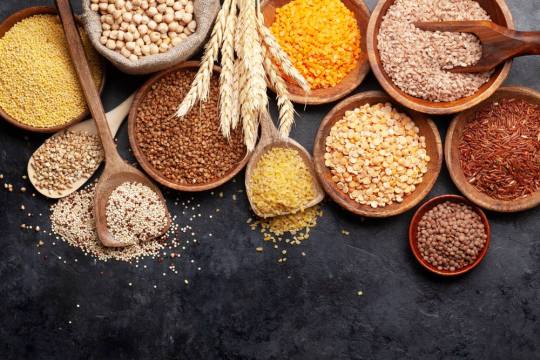
10 Reasons Why Millets Are The Superfood Of The Year 2023
Millets are small-seeded grasses, also known as nutri cereals, that have been gaining popularity as a superfood in recent years. They come in different varieties, such as pearl millet, finger millet, and foxtail millet. Millets have been consumed for centuries as an ancient grain. With the support of FSSAI (Food Safety and Standards Authority of India), they are being recognised as a superfood. The United Nations General Assembly declared it the International Year of Millets this year. This article takes a closer look at the benefits of millet and how Ayurveda is connected to it. But first, let’s understand what superfoods are and what they are called “super”.
What are superfoods?
Superfoods are nutrient-dense foods packed with a wide array of beneficial compounds and hailed for their potential health benefits. They are typically rich in vitamins, minerals, antioxidants, and phytochemicals, making them valuable additions to a balanced diet. Superfoods often include fruits and vegetables such as berries, leafy greens, and cruciferous vegetables like kale and broccoli; whole grains like millets, oats, quinoa, red rice and nuts and seeds, such as chia seeds and almonds, which provide healthy fats and protein.
Millets – an essential superfood
Ayurveda and Millets
You will be surprised to learn that Ayurveda deeply connects with millets and embraces them for their cooling properties, easy digestion, and suitability for different body constitutions. According to Ayurveda, millets are considered tridoshic, meaning they help balance all three doshas—Vata, Pitta, and Kapha—making them suitable for people with various body constitutions. Rich in fibre and nutrients, millets support balanced energy and digestive health. Regular millet consumption in alignment with one’s Ayurvedic constitution can contribute to overall well-being, promoting good digestion, balanced energy, and optimal health. Check out Ayurveda Awareness Centre for a more detailed approach to Ayurvedic practices.
Types of millets
As per the FSSAI classification, millets are categorised into Major Millet and Minor Millet based on the size of their grains. Major millets consist of sorghum, pearl millet, and finger millet, while minor millets include barnyard, kodo, foxtail, little, and proso millets.
Additionally, there exists another classification known as pseudo millets, which, although not belonging to the Poaceae botanical family like “true” grains, offer significant nutritional value. Buckwheat and Amaranth are examples of pseudo-millets possessing various essential nutrients. Each type of millet, including the pseudo millet, is a powerhouse of nutrition, making them adaptable and suitable for various diets and cuisines.
WHY ARE MILLETS SUPERFOOD?
1. Millets are Gluten-Free Superfood
For people with gluten intolerance, millets are a fantastic choice.
They are a great alternative to wheat, barley, and rye, which contain gluten. Millets are packed with essential nutrients and fibre, which adds a healthy addition to any diet.
Millets are a low glycemic index (GI) food. The GI measures how quickly blood glucose levels rise after eating a certain food. Low-GI foods cause gradual increases in blood sugar and insulin levels, which helps you feel full and stay energised for longer.
2. Millets are a Nutritional Powerhouse
Millets are a nutritional powerhouse packed with vitamins, minerals, and antioxidants. They are rich in protein, fibre, and essential amino acids, providing good nutrients for vegetarians and vegans. Millets are also low in fat and cholesterol, an ideal food for weight management.
They exhibit varying nutritional compositions but are generally abundant in dietary fibre, essential vitamins, minerals, and docosahexaenoic acid (DHA). They offer complex carbohydrates, fatty acids, and a diverse range of nutrients, with a high source of vitamin B like riboflavin and niacin.
3. Beneficial to the Digestive System
Millets are rich in fibre, which helps to regulate the digestive system. They are also a prebiotic food, which helps in increasing the growth of healthy bacteria in the gut. It can support better digestive health and lower the chance of experiencing digestive issues such as constipation and irritable bowel syndrome.
4. Millets Can Help Heal Chronic Conditions
Millets are full of anti-inflammatory properties, making them a great food for people with chronic conditions such as arthritis, asthma, and heart disease.
5. Millets Can Help Heal Diabetes
Millets possess a low glycemic index, rendering them an excellent dietary choice for individuals with diabetes. The presence of dietary fibres in millet contributes to the potential reduction in the risk of diabetes. It is due to the gradual breakdown and absorption of dietary fibres in the body, leading to better regulation of blood sugar levels. Furthermore, millets are rich in magnesium, which aids in lowering fasting blood sugar levels and enhancing the effectiveness of naturally produced insulin.
6. A Great Source of Energy
Millets are an excellent energy source for athletes and individuals leading active lifestyles. Their abundance of complex carbohydrates ensures a steady and sustained release of energy, supporting enhanced performance and endurance throughout the day. Incorporating millet into your diet can be beneficial in meeting the energy demands of a dynamic lifestyle.
7. Millets are Environmentally Sustainable
Since they are environmentally sustainable, they require less water and fertiliser than other crops. They are also drought-resistant and can grow in poor soil conditions, making them an ideal crop for farmers in developing countries.
8. Millets can fight against Cancer cells
Some varieties of millets also contain anti-cancer properties such as lignans and saponins, which help prevent cancer growth in humans by slowing down cell division, stopping cell proliferation and preventing tumour growth by increasing apoptosis (programmed cell death) and exhibiting anti-inflammatory properties.
Moreover, the high fibre content in millet helps in reducing the risk of cancer, particularly colorectal cancer, by promoting regular bowel movements and preventing constipation.
9. Millets are a great Vegan & Vegetarian Source
Millets are an excellent plant-based protein source, making them valuable to vegan and vegetarian diets. Rather than other grains, millets boast a higher protein content. The Journal of Food Science reveals that finger millet contains a protein content of up to 11.62%, surpassing the protein levels found in rice, wheat, and corn.
Furthermore, the protein in millets is considered complete, as it encompasses all nine essential amino acids. This distinction positions millet as one of the few plant-based protein sources that provide our bodies with these vital amino acids.
In addition to their protein content, millets are rich in essential vitamins, minerals, and dietary fibre, contributing to a healthy digestive system. Due to their natural, gluten-free nature and low-calorie content, millets are also a favourite choice for individuals aiming for weight loss and maintenance.
10. Millets are Delicious
Millets are delicious and used in various dishes such as dosa, porridge, bread, and pancakes.
Looking for Millet-based recipes?
Ingredients:
200 gm millet foxtail
100 gm idly rice
1 1/2 teaspoon fenugreek seeds
80 gm urad dal
Oil as required
Salt as required
Instructions:
Rinse the foxtail millet, urad dal, rice, and fenugreek seeds under running water.
Soak all the ingredients in water for about 6 hours or overnight.
Strain the water and transfer it to a blender or mixer grinder.
Grind the mixture to a smooth batter, adding water gradually as needed. The consistency should be similar to regular dosa batter.
Transfer the ground batter to a bowl and add salt. Mix well and let it ferment for 6-8 hours or overnight. Fermentation helps to improve the taste and texture.
Give a gentle stir to the fermented batter.
Heat a non-stick or cast-iron skillet (tawa) to medium heat and lightly grease it with oil.
Pour a ladleful of batter onto the centre of the tawa and evenly spread it to form a thin dosa. Drizzle a little oil on the edges of the dosa until golden brown.
Enjoy this nutritious Foxtail Millet Dosa with sambhar or coconut chutney.
RECIPE 2 – Nourishing Vegetable Millet Soup
Ingredients:
1/2 cup millet (any variety such as pearl millet, foxtail millet, or finger millet)
1 tablespoon olive oil
1 small onion, diced
2 cloves garlic, minced
2 carrots, diced
2 celery stalks, diced
4 cups vegetable broth or water
1 teaspoon dried thyme
1 teaspoon dried oregano
Salt and pepper to taste
Fresh parsley, chopped (for garnish)
Instructions:
Rinse the millet thoroughly under running water and set it aside.
Heat your pan on medium flame and add olive oil.
Add the chopped onion, minced garlic and sauté until they become translucent and fragrant.
Add the diced carrots and celery and cook for a few minutes until they soften.
Pour in the vegetable broth to a boiling temperature.
Add the rinsed millet, dried thyme, oregano, salt, and pepper to the pot. Stir well.
Reduce the heat to low, cover the pot, and let the soup simmer for about 20-25 minutes or until the millet is cooked and tender.
Adjust the seasonings to your requirements and turn off the heat, allowing it to cool.
Puree the soup until smooth or creamy texture using an immersion or regular blender. Be careful when blending hot liquids.
Pour the blended puree back into the pot and warm it on low heat.
Garnish with fresh parsley and serve hot.
Enjoy this comforting and wholesome Millet Soup!
Check out our article on Turmeric Latte, a healthy drink for cold and other flu problems.
There are several health advantages to consuming millet. They are a gluten-free superfood, a nutritional powerhouse, helpful in digestive problems and can help in healing chronic conditions such as diabetes and cardiovascular problems. They are also environmentally sustainable, affordable, and delicious. And the best part, they are super tasty and can be eaten in different forms.
------------------------------------
Know more:
How to improve the digestive system with Ayurveda?
Are the Food Additives in Your Diet Doing More Harm than Good?
What are the benefits of Mint Leaf in our Daily Lives?
What is the Relevance of Ayurveda, Yoga and Meditation for Continuous Partial Attention?
------------------------------------
CONTACT US:
Address: Ayurveda Awareness Centre (AAC) 14 Cunningham Street, Applecross, WA, 6153, Australia
Website: www.ayurveda-awareness.com.au
Contact No.: +61893154935
Email: [email protected]
------------------------------------
Follow us also,
Facebook: https://www.facebook.com/AyurvedaAwareness/
Instagram: https://www.instagram.com/ayurvedaawareness/
Youtube: https://www.youtube.com/@ayurvedaawareness
#ayurvedaperth#ayurvedaawareness#benefits of ayurveda#wellnessworkshop#ayurveda diet#millets#mind body spirit
0 notes
Text
'We are not immune to it': Expert advice on diabetes prevention as cases rise
After a new global study finds cases of diabetes are on the rise, the head of a national advocacy organization is reminding Canadians this country is “not immune” to that increase.
Researchers behind a study published Thursday in The Lancet expect cases around the world to almost triple by 2050, reaching a peak 1.3 billion.
“And here in Canada, we have been noticing that uptick very much,” says Laura Syron, president and CEO of Diabetes Canada. “We are not immune to it at all.”
The study found Type 2 diabetes makes up 96 per cent of all cases. In Canada, nearly 12 million people have either diabetes or pre-diabetes.
Syron herself was diagnosed with Type 2 seven years ago, when she was 50 years old.
“When I got my diagnosis, you could have knocked me over with a feather,” she says. “It was just at a regular annual check-up.”
“And I didn’t know what to do with that, and that’s one thing I will say, is that folks need help to understand what (the disease) is,” she adds.
“Diabetes is progressive,” says N.S. Health endocrinologist Dr. Tom Ransom. “Someone can be doing all of the right things and it just slowly gets worse, and they have to understand that it’s not their fault.”
Type 2 diabetes happens when the pancreas fails produce the insulin a body needs to function. As a result, a body’s cells can then respond poorly to what insulin is produced, making the body insulin resistant.
In certain cases, Dr. Ransom says Type 2 diabetes can be managed with healthy eating and exercise, but others also require medication or insulin.
Experts say healthy habits are especially important to combat the increase in reported cases of Type 2 diabetes among youth.
“Everyone should be eating a healthy diet and being as active as you can be,” says Dr. Ransom. “And then of course, have your regular screening with your family doctor to maybe detect it in its early stages and intervene if possible.”
“Unfortunately, it’s quite common that people can go years without knowing they have diabetes,” he adds. “It’s one of things you might not feel…when it’s more advanced, people get more symptomatic, a lot of drinking, going to the bathroom a lot, those are some early signs.”
“Obesity (is a) key risk factor,” says registered dietitian Angela Dufour. “We know that 60 per cent of adult Canadians and one-third of children under the age of 17 are overweight and obese.”
Her top tips for maintaining healthy blood glucose levels include limiting sugar intake while increasing fiber.
“We need have less than 10 per cent of our total energy coming from free sugars, that’s approximately 50 grams, or about 12 teaspoons,” she says.
“Health Canada recommends 30 to 50 grams of dietary fiber coming from mixed sources,” she explains. “That’s soluble and insoluble fiber.”
“Soluble can be found in oat bran, barley, nuts,” she continues. “Whereas insoluble fiber includes more of those whole grains, lots of our vegetable sources, brussels sprouts, broccoli, artichokes, wheat bran, so a mix of both of those types of fiber have been shown to improve that glycemic index.”
According to Diabetes Canada, it currently costs $50 million in health care a day to treat diabetes, a disease which can also lead to complications such kidney disease, eye damage, heart disease and stroke.
from CTV News - Atlantic https://ift.tt/g4UD8Iw
0 notes
Text
Organic Food and Beverages Market Size and Share Analysis by Type, Application, Segmentation, Innovations, Solution and Services by 2033
In the present year 2023, the organic food and beverage market is valued to be around US$ 250 Bn, which is analysed to register a grand CAGR of 13% during the forecast years. As per the experts, the overall valuation is expected to reach about US$ Bn by 2033.
The expansion of the global organic food and beverage industry has been aided by consumer knowledge of health issues associated with conventional agricultural produce and the numerous advantages of consuming organic food products. In the near future, it is projected that rising consumer knowledge of the advantages of avoiding genetically engineered or GM crops would drive the global organic food and beverage market opportunities.
In regard to government expenditure on organic food production, China, India, and Japan are the three largest economies. These nations with the greatest populations also have a substantial inclination to manufacture organic food and drinks. Additionally, a significant increase in the consumption of frozen food as a result of less time available for cooking and preparation is creating new opportunities in the local supermarkets and hypermarkets for organic frozen food items.
For more Insights, Download Report Sample@ https://www.futuremarketinsights.com/reports/sample/rep-gb-15960
Key Takeaways from the Organic Food and Beverages Market Study
The greatest CAGR is anticipated to be seen in the Asia-Pacific region throughout the projection period by the rapid adoption of organic farming methods in China and India.
Now organic fruits and vegetable segment dominates the market by contributing more than 40% of the revenue generated, while the organic meat & poultry segment is poised to take over later by growing at a rate of 15% through 2033.
The contribution of offline distribution channels has come down to 50% in the past few years and the online distribution channel is projected to grow at a rate of 14% during the forecast years.
Competitive Landscape for the Organic Food and Beverages Market
The Whole Foods Market L.P., THE HERSHEY COMPANY, Amy’s Kitchen, Inc., Organic Valley, Conagra Brands, Inc., Nestlé, Eden Foods, SunOpta, Dole Food Company, Inc, Dairy Farmers of America, Inc., General Mills Inc., Danone, United Natural Foods, Inc., Gujarat Cooperative Milk Marketing Federation (Amul), EVOL Foods, Eden Foods, Starbucks Corporation, Nature’s Path Food,WhiteWave Foods Co., Hain Celestial Group, Inc., Dean Foods Company, SpartanNash Company, Amy’s Kitchen, Inc., and the Kroger Co. are some of the top companies operating in the organic food and beverage sector. Additionally, in the contemporary world, many private-label organic drink companies are becoming more well-known on a broad scale.
View Report@ https://www.futuremarketinsights.com/reports/organic-food-and-beverages-market
Recent Developments in the Organic Food and Beverages Industry
Sunopta Company, which is a pioneer in the production of healthy fruit- and plant-based meals and drinks, released OatGold TM in the market in March 2020 as a nutrient-rich powder and is used to make a variety of items, including baked goods, salty snacks, and sandwich spreads.
The purchase of Assan Foods by The Kraft Heinz Company from a privately owned Turkish company named Kibar Holding was revealed in June 2021. With this takeover, the business hopes to broaden its market reach internationally while concentrating on improving food quality and customer service.
In April 2020, Amy’s Kitchen introduced veggie-loaded pizzas that are gluten-free and are prepared using organic sweet potatoes, broccoli, and other condiments. According to another announcement by Amy’s Kitchen, in November 2020, it has plans to invest in a new pizza manufacturing plant in San Jose, California, particularly for the production of frozen organic meals and shelf-stable soups
Nature’s Path Company introduced Regenerative Organic Certified Instant Oatmeal in April 2020. Nature’s Path is also dedicated to eco-friendly packaging and has developed a business model around carbon neutrality, and ecological giveback initiatives in support of their belief that combating climate change should start with the foodstuff we produce and consume.
Key Segments
By Product Type:
Organic Fruits and Vegetables
Organic Meat, Fish and Poultry
Organic Dairy Products
Organic Frozen and Processed Foods
Organic Non Dairy Beverages
Organic Coffee and Tea
Organic Beer and Wine
Other Organic Food and Beverages
By Process:
Processed
Unprocessed
By Distribution channel:
Supermarket/Hypermarket
Specialty Stores
Convenience Stores
Online Sales Channel
Others
By Region:
North America
Latin America
Europe
East Asia
South Asia and Pacific
Middle East and Africa (MEA)
About Future Market Insights Future Market Insights (ESOMAR certified market research organization and a member of Greater New York Chamber of Commerce) provides in-depth insights into governing factors elevating the demand in the market. It discloses opportunities that will favor the market growth in various segments on the basis of Source, Application, Sales Channel and End Use over the next 10-years.
0 notes
Note
REAL !!!! broccoli is brilliant and no one can tell me otherwise
BROCCOLI NATION RISE UP
opinions on broccoli, monseuir
top tier vegetable. incredibly underrated. the broccoli slander has to end
11 notes
·
View notes
Note
Hi ABL! Can I be what I'm assuming is the 80th person to ask for your analysis about the move of Prem and Boun to GMMTV? Particularly, any thoughts on:
Why did the move happen and does it mean anything that they moved together?
What might this mean for new series with them as a pair and the potential to break up their pairing?
Are there any GMMTV talents that you'd love to see Boun or Prem paired with?
Thanks in advance for any insights!
BounPrem move to GMMTV
DISCUSS!
AKA Thai BL industry speculation, my favorite game!!

I am actually cautiously optimistic about this.
They're an ideal pair for GMMTV to get. Especially if GMMTV continues optioning Japanese IP. These two are beautifully suited to A LOT of yaoi. Just imagine them in a Thai version of Takumi-kun? !

Rise up Broccoli Nation... let's talk kabedons!
Why did the move happened?
From BounPrem's perspective:
I think they've been pretty underserved by their current home and that home is pushing them towards pulps (I refuse to talk about Even Sun and I found Between Us pretty darn disappointing too.) If they want higher quality narratives and content, GMMTV is a better home for them.

Also it will handle their brand better for sponsorship and longevity. I was shocked not to see them on more stuff in Bangkok. Most sponsor gigs and major promos and billboards and such were GMMTV pairs and... ZeeNunew
Right now there are good indication for pairs who WANT to stick together (even while aging up) that GMMTV can handle it - because of what they've done with OffGun and TayNew recently.

It's clear that GMMTV will throw a good pair at decent content (or at least popular stuff) pretty regularly. With GMMTV, BounPrem stand an even better chance at landing a prestige piece, since they have an established fan base.
From the pair's perspective, this is a good career move.
Now, from GMMTV's perspective, let's talk...
Does it mean anything that they moved together?
Yes, it most likely means GMMTV signed them as a BL pair. Some of GMMTV's other hot properties like EarttMix, OffGun, and TayNew clearly want to do (and have done) more than just BL for GMMTV. Even "second levels" like JimmySea are being split for het dramas. It means they lose their BL talent for a good potion of filming season, while they film some other property.
If GMMTV can sign a high value pair that's happy to stay doing BL regularly, that will work very well for them.
ALSO they've add a hot property pair into their stable that's on the EarthMix (highly commercial) level AND willing to do high heat. I think this is key. GMMTV has shown they want to move into sexier stuff (NC-GMMTV?) with things like Moonlight Chicken and Only Friends. VERY few of their existing pairs are willing to go there, and can do it as well as, BounPrem. These 2 do lust and thirst in a way that most GMMTV pairs can't (they are just too brotherly with each other).
I think this is a sign GMMTV want's to enter the after dark market, and move international markets too. (The higher heat stuff tends to be particularly popular outside of Thailand.)
Also, I think it's pretty clear some of GMMTV's hoped for heavy hitters last year (like PerthChimon) aren't working out for them, so it makes sense to onboard a solid bankable pair whole cloth at this juncture.

I said a while ago I thought GMMTV would make a play for ZeeNunew. I didn't have BounPrem on the list as a backup option, but these pairs are kinda similar, and fill the same niche.
Anyway, smart move all 'round, IMHO.

What might this mean for new series with them as a pair and the potential to break up their pairing?
I think the pairing is now less likely to break up than ever.
I think they've possibly been tempted to sign BY a prestige new series carrot. We could get something historical with them in it. Or, like I said, something Japanese IP. Probably higher heat than GMMTV has given us in a full BL.
Eyes Target the Finder thoughtfully. (It was VERY popular when I was over there.)

Are there any GMMTV talents that you'd love to see Boun or Prem paired with?
Like I said, I think GMMTV's objective in signing them would actually be the opposite - NOT to split the pair.

But if you just want me to speculate for fun (and piss stadn off), I'm always happy to do so.
First is great with anyone, so First with either... or both. First is like the MSG of GMMTV, always improves the taste of any dish.
It might be fun to see Jimmy paired with Prem. But in all honestly I really want a Jimmy + Khaotung thing to happen.
I think Mix has some BDE too, so I think he should play the seme for a change, why not him and Prem?
As for Boun, I think he's a little more dependent on the pairing. It's hard for me to imagine him with someone else. Lemme think. Someone with a very soft screen presence, maybe? How about Gun?

Heh he, now I'm just winding ya'll up.
Let me have my foibles.

#fun fun speculation#thai bl#bl industry chat#BounPrem#gmmtv#thai bl branded pairs#smart move gmmtv very smart
132 notes
·
View notes
Photo


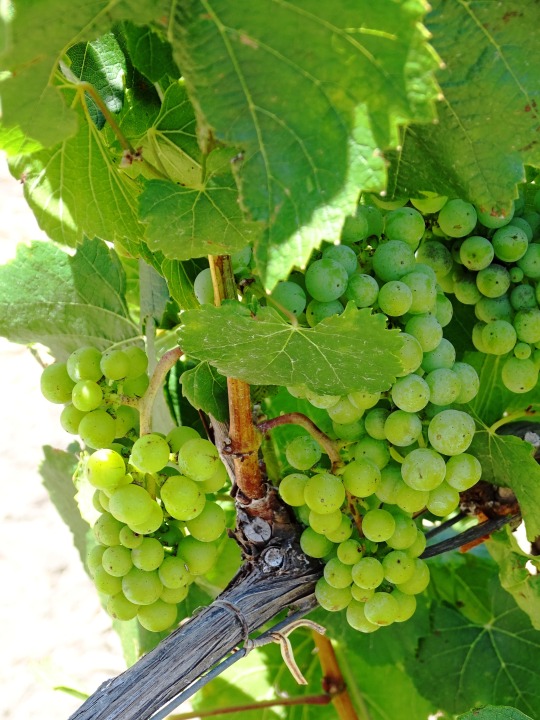


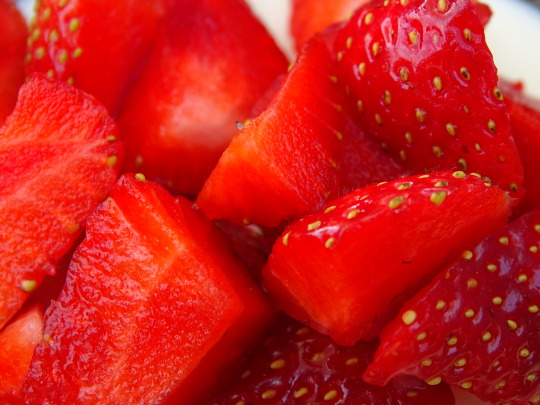
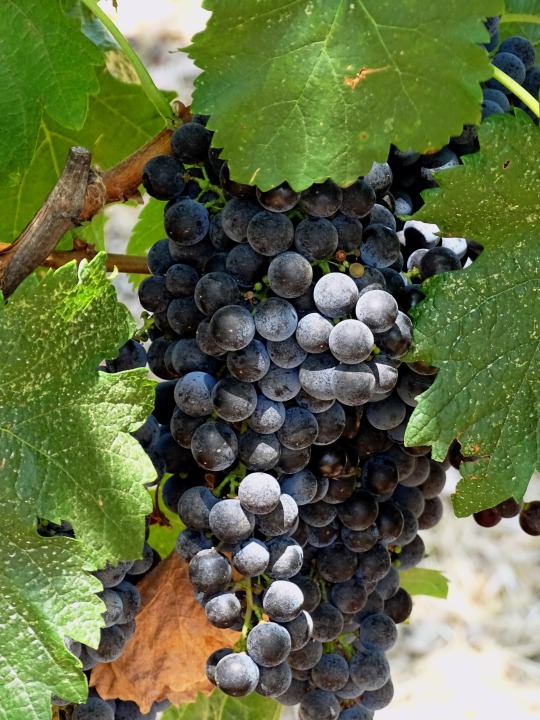

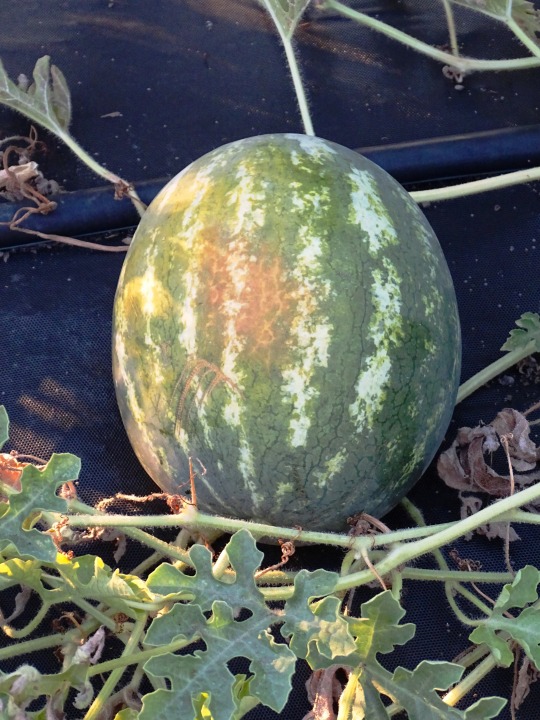

National Vitamin C Day
It’s good for your immune system, it’s good for your mental health, it’s even good for your skin. Don’t neglect this crucial vitamin on Vitamin C Day.
Vitamin C. We all hear about it, how good it is for us, how it will help us fight off that cold. But how much do we really know about this mystery substance, and just how much can it do to help our bodies? Take advantage of Vitamin C day to learn something new and boost your health, to boot!
Learn about National Vitamin C Day
National Vitamin C Day has been created so that we can appreciate and learn all about the different ways that vitamin C can benefit our health. Vitamin C is also referred to as ascorbate and ascorbic acid. It is found in a number of different foods, as well as being sold as a dietary supplement. It is an essential nutrient in terms of producing a number of neurotransmitters and repairing tissues. It was discovered back in 1912. Sixteen years later, it was isolated. Then, in 1933, it became the first vitamin to be produced chemically.
Vitamin C is widely recognized for helping to keep colds at bay. However, there are plenty of other benefits that are associated with this powerful vitamin! You could reduce your blood pressure by upping your vitamin C uptake, for example. Vitamin C is also beneficial in terms of helping to keep your skin healthy. This is because it protects it from the oxidative damage that is caused as a result of exposure on a daily basis to pollution, heat, and light. This has seen the population of vitamin C products increase considerably.
There are plenty of natural ways to add some more vitamin C to your diet. You don’t need to opt for vitamin C supplements, although many people do. Some of the fruits that have the highest sources of vitamin C include cantaloupe melon, citrus juices and fruits, kiwi fruit, pineapple, papaya, mango, and the various berries, such as cranberries, blueberries, raspberries, and strawberries. There are a number of vegetables that are rich in vitamin C as well, including cauliflower and broccoli.
The History of National Vitamin C Day
As a substance occurring naturally in countless different fruits and vegetables, vitamin C has likely been around as long as the earth itself. Peoples from all over the world have long been aware of the extensive health benefits of consuming foods high in vitamin C as well as the risks associated with not consuming enough of it, one of which is scurvy. It was not until the late 19th century that scurvy was described in detail by British physician Sir Thomas Barlow, that people began to understand just how much this substance can do for our health.
However, scurvy was known for thousands of years prior, with even the great Hippocrates himself writing about it. In the 18th century, it is assumed that the disease killed more British sailors than any enemies they had and was one of the greatest factors limiting maritime travel over the ages. Today, very few people suffer from scurvy and Vitamin C is considered on of the most important nutrients food can and should provide.
How to celebrate National Vitamin C Day
The best way to celebrate National Vitamin C Day is to stay healthy, and this very vitamin can help you with that! Vitamin C is necessary for good health and general well-being, but the unfortunate truth is that not everyone has the time to pay close attention to what they eat and just how many grams or milligrams of a certain substance they consume daily.
The drastic rise in popularity of microwavable dishes has caused people’s diets to become much less healthy over the recent years, as has the fact that many people are working longer hours than ever and don’t have the time or the energy to cook themselves and their families a well-balanced meal every day.
Luckily, there are a few ways to make sure you’re getting enough Vitamin C, no matter your lifestyle. One is to simply squeeze lemon juice into the water you drink. Half a lemon contains almost 100% of your daily vitamin C requirement, so just a squeeze here and there will be more than enough!
The same goes for—alcoholic drinks. If you’re going to have a few Mojitos this Friday anyway, why not use fresh lime juice? And have we mentioned Vitamin C helps prevent hangovers as well?
But it doesn’t stop there—as it tuns out, you can put lemon juice into pretty much everything for your daily dose of Vitamin C as well as a deliciously tangy zing. As opposed to some other “healthy” foods which, let’s face it, can be downright nasty (looking at you, kale!), lemon juice makes almost everything you put it on and in taste better.
Salad dressings. Grilled meats. The list goes on. And if for whatever reason you’re not a fan of lemons, don’t worry! Many fruits and vegetables contain enough Vitamin C to keep you healthy, including tomatoes, strawberries, spinach, peppers, and many more. Take advantage of National Vitamin C Day to do your body a favor!
Vitamin C cannot only be consumed, but it can be applied to your skin as well. As mentioned earlier, Vitamin C is great for skin health. Why not make your own Vitamin C serum? It is not as difficult as you may think! All you need is some aloe vera gel, filtered water, and vitamin C powder. You may decide to add some other vitamins as well, such as vitamin E oil. There are some variations of how to make vitamin C serums and facemasks online, but the ingredient list is a simple one, yet the benefits are vast!
Of course, you can also buy some vitamin C skin products, rather than making your own. If you are going to use a vitamin C serum, whether homemade or not, we recommend washing your face first and using a toner. You can then apply a small amount of the serum. The serum is probably going to be quite thick. Do this before you go to bed, and add another layer of moisturizer. In the morning, you should wash your face thoroughly before any makeup is applied. Because of sun exposure, vitamin C serum is not designed to be used on a daily basis.
Make sure you spread the word about National Vitamin C Day and the benefits associated with this nutrient so that you can help others experience the benefits of it!
Source
#seaberry and hazelnut mousse#grape#Ram's Gate Winery#apple#pear#watermelon#Beringer Vineyards#Brix Restaurant & Gardens#Sangria#Duck a l'Orange#strawberry#Lemon Semifreddo#food#dessert#travel#Spain#Sweden#vacation#summer 2022#summer 2021#2020#2019#National Vitamin C Day#4 April#NationalVitaminCDay
2 notes
·
View notes
Text
Broccoli nation RISE!!!! A new Between Us episode is almost here!!!!!!

What Day Is It!?!?



22 notes
·
View notes
Text
I was tagged by the sweety @visenyatargaryen thank you, Ale!
rules: answer 30 questions and tag blogs you are contractually obligated (?) to know better
name/nickname: Alessia
gender: female
height: 1,55 cm (since the last time, years ago i mean, i measured my height so idk)
time: 8 pm
birthday: august 11
favourite bands: imagine dragons but i also like one republic
favourite solo artists: Dotan (at the moment, sorry i don’t always listen to single artists)
song stuck in my head: atm “Believer” by Conor Maynard and Alan Walker
last show: Demon Slayer (anime)
last movie: Love and Monsters
when did i create this blog: if i remember right...in 2014
last thing googled: something for my university
other blogs: i don’t have another one
do i get asks: almost never... well, actually never lol
why i chose my url: because since i started to read shadow and bone trilogy i wanted to put the main character’s name as a url lol okay i like alina starkov as a character soo
following: 125
followers: 1268 atm but i may lose them or gain them so...
average hours of sleep: i don’t know tbh
lucky number: i don’t have that i think
instruments: i play nothing
what am i wearing: pajamas
dream trip: i’d like to go to norway, greece and maybe japan too
favourite food: hamburger but i like quite everything except for broccoli and some legumes
nationality: italian
favourite song: it might be strange but i actually don’t have one atm
last book read: the last book was Ruin and Rising by Leigh Bardugo but now i’m reading Six of Crows
top 3 fictional worlds to live in: harry potter’s world, shadow and bone’s world and shadowhunters(?)
okay, now i tag (if you want to do it ofc): @wnter-soldiers , @diegoshargreevs , @the-maidofmischief , @ginnypcttcr
2 notes
·
View notes
Text
rules: answer 30 questions and tag 20 blogs you are contractually obligated to know better.
tagged by @batty4starker, @saltystarker
Name/Nickname: Smash
Gender: Female
Star sign: Cancer
Height: 5′8 / 173 cm
Time: 7:40pm
Birthday: July 16
Favorite Bands: Oooh, idk are people still in bands anymore (?)... Cigarettes After Sex, Red, MCR... i can’t remember...
Favorite Solo artists: Halsey, Troye Sivan, Marina, Ava Max, Carlie Hanson, Kim Petras
Song stuck in my head: Daze Inn - Carlie Hanson
Last movie: Shit, idk, Rise of the Guardians probably
Last Show: Stranger Things, I think.
When did I create this blog: March 2019
What do I post: Umm.... sometimes I write, sometimes, I moodboard, but I’m a shitty blogger these days, so...
Last thing googled: The opening hours of my new local supermarket
Other blogs: None
Do I get asks: Sometimes, but my anon is off for reasons.
Why I chose my url: Once upon a time I had a grand idea that my offering to the fandom would be dark-but-soft starker ala some of my earlier works but now I just write gooey love stories so it doesn’t really make sense huh
Following: 289
Followers: 0-100000, pick a number
Average hours of sleep: 4 or 7
Lucky number: 3, 4, 16
Instruments: Piano, Violin
What am I wearing?: Some old granny sweater I picked up from the thrift store and unsexy underwear
Dream job: Either a professor of medicine at some esteemed university or an artist for rich people who will think my garbage is visionary and will pay me extravagant amounts for it
Dream trip: UK/Europe
Favorite food: Broccoli
Nationality: Australian
Favorite song: Lonely Hearts Club by Marina
Last book read: Oh goodness, I can’t remember. Probably some Vonnegut book while I was at the gym to distract myself from how much I hate exertion.
Top three fictional universes I’d like to live in: MCU, Suikoden, Inception
tagging: @geen-beems, @starkerscoop, @plueschpop, @inastormbestdressfearless, @muse-of-gods, @sinditia, @the-mad-starker , @keenwonderlandcollector sorry I can’t think rn, everyone is tagged? please go ahead....
5 notes
·
View notes